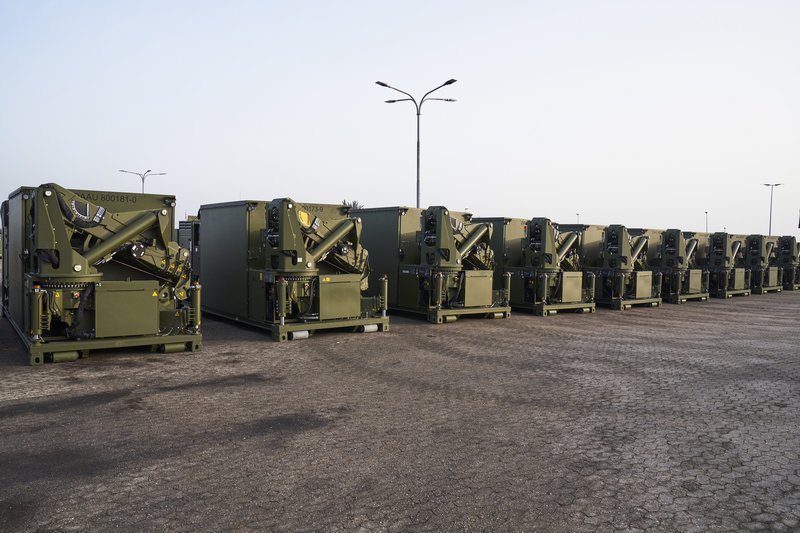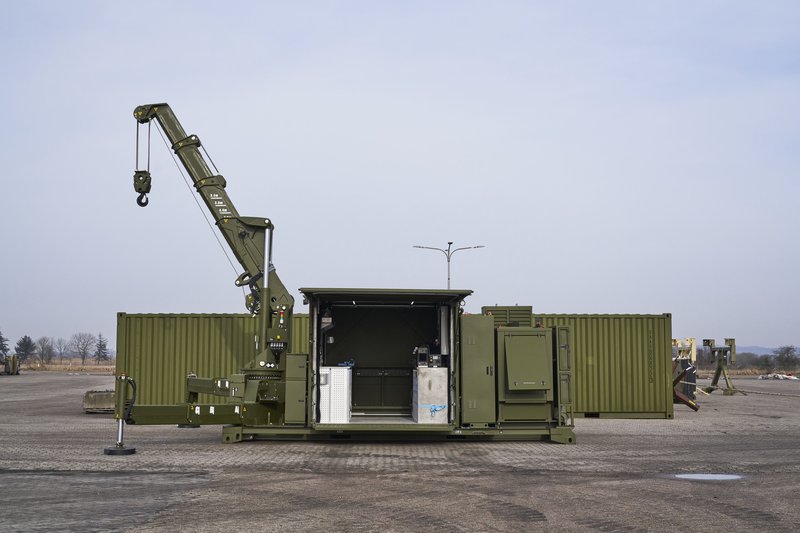Supporting roles – why forward repair systems are an in-demand capability
Danish company Glaucus has delivered two of its latest Forward Repair Systems NATO (FRSN) to the US Army, optimised to meet its specific requirements including a more powerful crane and special tool load.
The FRSN was originally developed by the company as a private venture following discussions with a number of potential customers for a rapidly deployable system. The first prototype was completed late in 2019 and so far over 35 have been sold... Continues below
Newsletter Sponsors:

Above: A batch of FRSNs in travelling configuration awaiting delivery. (Photo: Glaucus)
The first customer was the Danish Army, which deploys the system under the designation FRSN M/18 and typically uses it to support its Leopard 2 MBT fleet.
Some have now been passed to Ukraine as part of Danish support to the country which also included its complete fleet of 19 new Nexter CAESAR 155mm self-propelled artillery systems.

Explore armored vehicles and turret systems of Otokar, the global land systems manufacturer.
FRSN itself consists of a reinforced standard STANAG 2413 flat rack fitted with a workshop within ISO 1CC dimensions (20x8x8) optimised for battlefield repair missions.
It can be deployed by any truck fitted with a mechanical handing system such as the US Palletized Loading System (PLS) or UK Demountable Rack Off-Loading and Pick-up System (DROPS), which then frees up the truck to be used for another battlefield mission.
Once deployed on the ground it takes less than five minutes to be ready for action and stabilised jacks are extended and deployed at the rear when the crane is in use.

To carry out its mission it is fitted with a range of equipment, including the onboard hydraulically operated crane with telescopic jib which would typically be used to remove an MBT power pack consisting of engine, transmission and cooling system.
It is fitted with a 70kVA, 230/400V, 50Hz multi-fuel generator to provide power for lighting, an induction heater and a power take-off for equipment including the crane, air compressor, welder, cutting gear, diagnostics and a full range of tools.
Other articles in this newsletter:
News from the front – how Ukraine’s long war is changing attitudes to artillery
Glaucus stresses that there is flexibility in the FRSN design to meet specific end user requirements such as the capacity of the crane and range of tools carried.
The standard crane has a maximum lifting capacity of 7t with a radius of 4m and a maximum lifting height of 5m, and is operated by remote control from a safe distance.

Above: An FRSN fully deployed with shelter sides open, outriggers extended and crane ready for use. (Photo: Glaucus)
The air compressor is capable of providing more than 900l a minute for onboard pneumatic tools, inflation tyres and air clearing.
The standard welding and cutting capability includes a shielded metal arc, metal inert gas, induction heater and exothermic cutting and brazing.
The welding cabinet includes storage for up to four pressurised air vessels plus dedicated hose reels for easier usage.
By early 2024 the system was in service with Denmark, Italy, Ukraine and the US and has been demonstrated to a number of other countries.

Don't want to miss out on future Decisive Edge content? Make sure you are signed up to our email newsletters.













